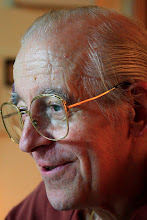“A square does not have an identity by itself but is defined by the activities of the people who fill the square,” wrote the Italian urban designer and architect Franco Mancuso in Squares of Europe (2007), which he co-authored with the Polish Krzysztof Kowalski. He means that creating and decorating a town square does not necessarily guarantee that it will become a plaza that fosters vitality.
A square has various roles and functions in human society. An agora (Ἀγορά)—or an open public space for assembly in ancient Greek city-states—is considered the origin of the square in the history of human civilisation. Agorazo (ἀγοράζω, coming to the market or shopping) is the origin of the term. On top of its function as a place for commerce, the agora was the centre of daily life for Greek citizens in politics, economy, society and culture, eventually becoming the prime place for any type of gathering. From the Middle Ages to today, squares have served as places for relaxation, entertainment and festivals. Sometimes, angry citizens assemble at these squares, staging protests and demonstrations.
A square has various roles and functions in human society. An agora (Ἀγορά)—or an open public space for assembly in ancient Greek city-states—is considered the origin of the square in the history of human civilisation. Agorazo (ἀγοράζω, coming to the market or shopping) is the origin of the term. On top of its function as a place for commerce, the agora was the centre of daily life for Greek citizens in politics, economy, society and culture, eventually becoming the prime place for any type of gathering. From the Middle Ages to today, squares have served as places for relaxation, entertainment and festivals. Sometimes, angry citizens assemble at these squares, staging protests and demonstrations.

Rome. Spanish Steps and church of Trinita’ dei Monti
from Piazza di Spagna
from Piazza di Spagna
Piazza di Spagna in Rome has long been a place for young Italians to meet and rest. It also provided the romantic setting for the classic Audrey Hepburn (1929-1993) and Gregory Peck (1916-2003) film Roman Holiday (1953). In contrast, the Bebelplatz in central Berlin embraces the wounds of history. In 1933, the Nazis burned more than 20 000 books there that had been banned under the regime. One of the most famous lines of German poet Heinrich Heine (1797-1856) play Almansor (1821) is engraved in the ground at the site: "Das war ein Vorspiel nur, dort wo man Bücher verbrennt, verbrennt man am Ende auch Menschen. (That was but a prelude; where they burn books, they will ultimately burn people also.)" The King of France Louis XVI (1754-1793, r.1774-1792) and his wife Marie Antoinette (1755-1793) were beheaded at Place de la Concorde during the French Revolution in 1793, while the First Russian Revolution in 1905 was ignited by the massacre of workers at the square of the Winter Palace in St. Petersburg. In 1989, university students, intellectuals and citizens gathered at Tiananmen Square in Beijing to call for demonstrations but were crushed by government forces.
 Seoul. Seoul Plaza
Seoul. Seoul PlazaIn Korea, Seoul Plaza (서울廣場, 서울광장) in front of City Hall (서울特別市 廳舍, 서울특별시) is a space where citizens can have rallies or stage demonstrations as long as they report their gatherings in advance. The city council recently passed a legislative revision allowing assemblies there. Even if the government asks the city council to reconsider its decision, the outcome is not likely to change since the Democratic Party—that initiated the revision—holds a majority.
Since opening 6 years ago, Seoul Plaza has been promoted as a site for leisure and entertainment events for local citizens. But it would not be easy to enjoy the open space from now on. It is clear going forward that the plaza will be used more for demonstrations, which will change the dynamic of an area primarily meant to bring out the best in Korean culture.
Giorgio Olivotto
Photos by Chong Myo-hwa
Seoul, Korea
November 14, 2010
Photos by Chong Myo-hwa
Seoul, Korea
November 14, 2010

Nessun commento:
Posta un commento